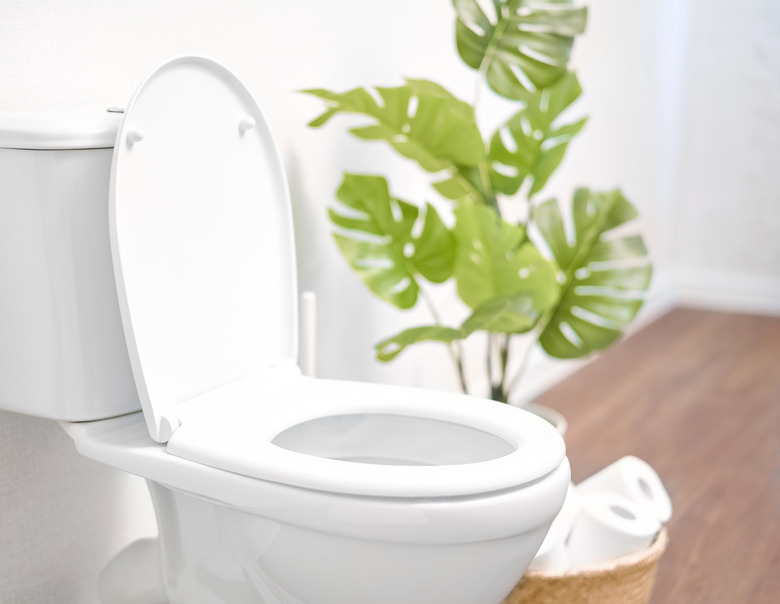Open-Front Vs. Closed-Front Toilet Seats
We may receive a commission on purchases made from links.
There are two basic types of toilet seats. There's the open-front seat, which resembles a horseshoe, often has no lid and is used frequently in public bathrooms, and the closed-front seat, which is a closed oval shape, usually has a lid and is almost exclusively used in home bathrooms.
Open- vs. Closed-Front Toilet Seats
Open- vs. Closed-Front Toilet Seats
A basic open-front toilet seat is less expensive than a closed-front seat for several reasons. Open-front seats use less material overall. This occurs because of the space omitted in the front of the seat. Open-front toilet seats are also generally thinner than their closed-front counterparts. Open-front seats usually — though not always — come without a lid.
Closed-front toilet seats are usually thicker and lidded. They also come in a variety of colors to match a bathroom's decor. Open-front toilet seats, on the other hand, are usually made in basic white or black. In some cases, specialized open-front seats are created for a specific purpose, such as medical applications or extra-large sizes. The latter types of specialized toilet seats are more expensive than basic closed-front seats.
Toilet Seat Appearance in Homes
Toilet Seat Appearance in Homes
An open-front seat has an institutional appearance. Because there is no lid on such a toilet seat, you are able to see directly into the toilet bowl. Since open-front seats are often placed in closed bathroom stalls, their appearance doesn't need to be fancy. Such toilet seats are also easier to clean. This is helpful for cleaning staff, who must often clean many toilet seats in a short period of time.
A closed-front seat looks more like a chair when the lid is down, and it comes in a variety of colors and styles. Most homeowners decorate their bathrooms to be visually appealing, and the closed front seat fills that purpose. The lid is also desirable, as it keeps young children and pets out of the toilet bowl.
Sanitation Issues With Toilet Seats
Sanitation Issues With Toilet Seats
Open-front seats are often considered more sanitary, though it has less to do with the front of the toilet seat being especially unhygienic and more to do with the fact that there's just less to clean on an open-front toilet seat. Closed-front toilet seats generally have more parts and surfaces to clean, but there is usually only one to clean in a home bathroom compared to several in a public bathroom.
Home toilet seats are used much less frequently and are shared by significantly fewer people. This means they are less likely to harbor a wide variety of germs as open-front toilet seats can.
IAPMO Uniform Plumbing Code
IAPMO Uniform Plumbing Code
The main reason public restrooms have open-front toilet seats is due to the 1997 International Association of Plumbing and Mechanical Officials (IAPMO) Uniform Plumbing Code, Appendix E 53. This code dictates that all toilets seats, with the exception of those in private homes, must have open fronts. This code is commonly upheld in most parts of the U.S., so that's why you rarely see a home-style, closed-front seat in public.
While there is nothing saying that home bathrooms should use a closed-front seat, and most home suppliers offer open-front styles, the closed-front style remains standard for household toilets.
